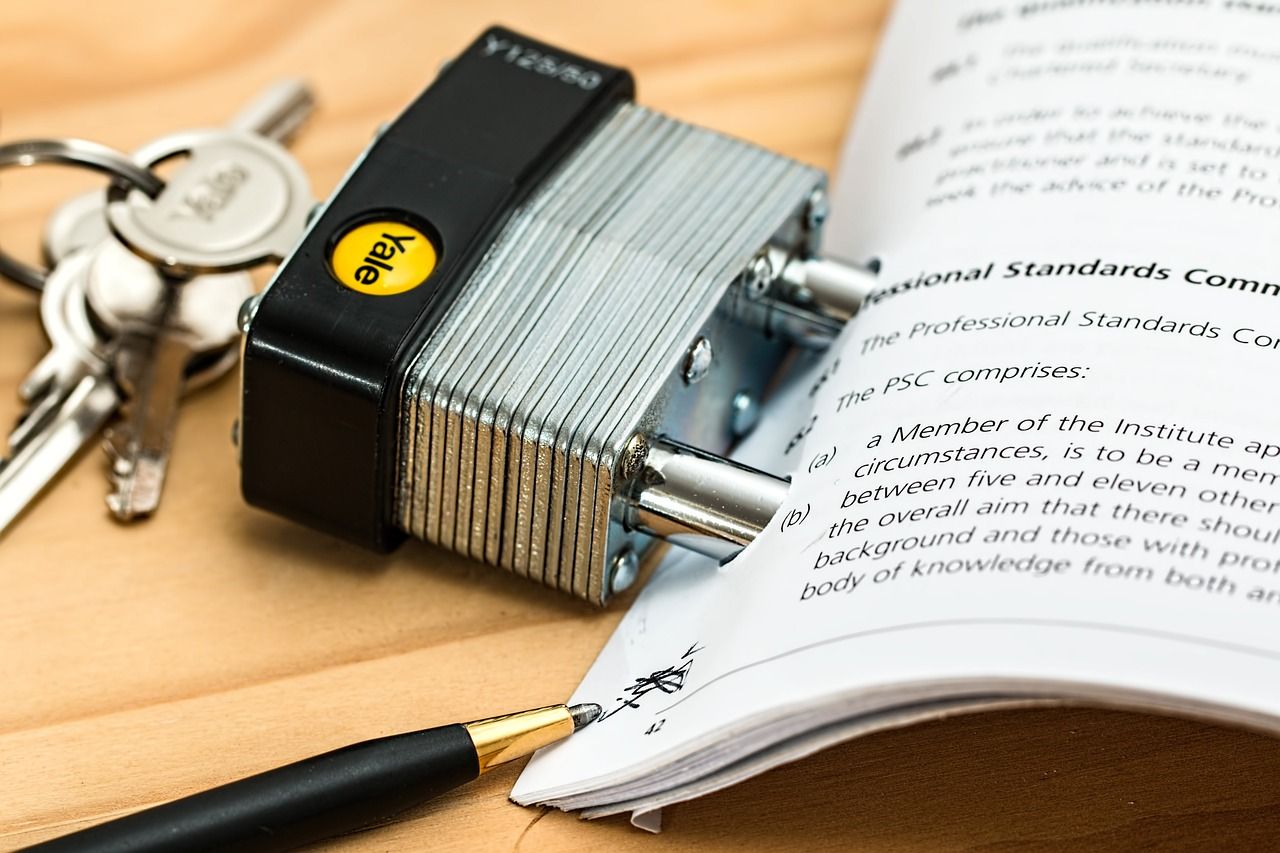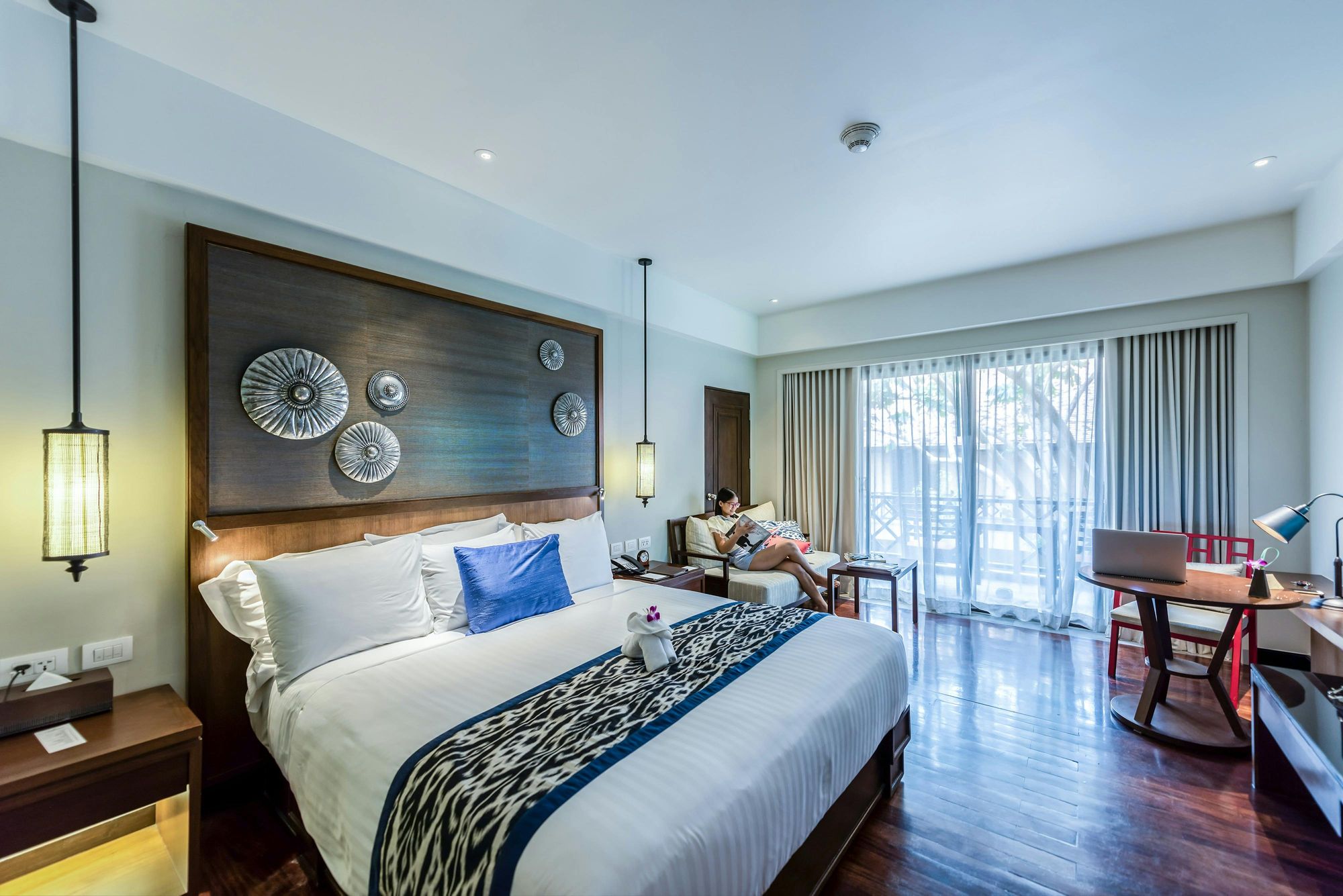Hotel reviews provide important feedback in the hospitality industry, highlighting areas for improvement and showcasing a hotel's strengths. The Hospitality Industry has the potential to be a $4.7 Trillion Industry as described by Forbes.
The value of hotel reviews is immense to management, staff, and potential guests who can use the analysis of this review data to derive valuable insights to have a deeper understanding of hotel performance beyond traditional metrics like ratings, cleanliness, and amenities.
This article explores the actionable insights that can be derived from analyzing online hotel reviews. The analysis is based on data from a real hotel, which will remain anonymous and be referred to as 'Hotel Z'.
Before we can analyze the hotel review data, we first need a dataset. Using DataHen’s web scraping services, we acquired the necessary data. Several preprocessing steps are required before extracting meaningful insights, as illustrated in the workflow diagram below.
We will explore how to identify common themes, analyze trends over time, assess demographic factors, and develop strategies based on these insights.

How to Use Sentiment Analysis for Hotel Reviews?
Sentiment analysis is a technique that identifies the emotional tone of text, such as hotel reviews, by categorizing feedback as positive or negative. This method enables hotels to quickly summarize large volumes of customer opinions, providing valuable insights into satisfaction levels and areas for improvement.
By systematically evaluating these sentiments, hotel managers can identify trends, strengths, and underlying issues, empowering them to make data-driven decisions that enhance guest experiences and service quality.
Using sentiment analysis, we can turn text reviews like the following:

Into an informational plot that can give us business insight, like this:
The dashboard provides a comprehensive overview of sentiment analysis for hotel reviews, displaying key metrics such as sentiment distribution, rating trends, and common themes in guest feedback.
By examining this dashboard, we can extract valuable business insights, such as identifying strengths and weaknesses in service areas, tracking changes in guest sentiment over time, and uncovering specific aspects of the guest experience that impact satisfaction.

Why are Hotel Reviews Important?
Hotel reviews play a pivotal role in influencing potential guests' booking decisions by offering insights into various aspects such as cleanliness, amenities, and service, this is also backed by a 2020 Study of North America Hotel Guest Satisfaction Index by J.D. Power. Unlike simple star ratings, these reviews provide trustworthy, real-world feedback that goes beyond what hotels advertise, building trust and confidence among prospective guests.
Reviews are also essential for managing a hotel’s online reputation. They offer direct feedback that highlights both strengths and areas for improvement. For instance, a hotel consistently praised for cleanliness and customer service can leverage this positive feedback in marketing while addressing any constructive criticism to enhance its offerings.
Positive reviews can significantly differentiate a hotel from its competitors in a market where many offer similar amenities, services, and prices. A hotel frequently praised for its staff, amenities, and services will stand out to potential guests, making it a preferred choice.
Sentiment analysis has a significant impact on the performance of hotels. By leveraging this technology, hotels can gain a deeper understanding of customer perceptions and make data-driven decisions to enhance their operations.
Enhancing Customer Experience
- Personalized Services: By analyzing guest feedback, hotels can identify individual preferences and tailor services to meet specific needs, resulting in a more personalized and satisfying experience.
- Real-Time Feedback: Monitoring social media and reviewing sites in real time allows hotels to address guest concerns promptly, improving guest satisfaction and loyalty.
Improving Service Quality
- Identifying Pain Points: Sentiment analysis helps hotels identify recurring issues such as problems with cleanliness, staff behavior, or amenities. Addressing these issues can lead to significant improvements in service quality.
- Bench marking Performance: By comparing sentiment scores with competitors, hotels can benchmark their performance and implement best practices to enhance their services.
Strategic Decision Making
- Targeted Marketing Campaigns: Insights from sentiment analysis can guide marketing strategies. For instance, if guests frequently praise a hotel’s spa services, the hotel can focus its marketing efforts on promoting spa packages and special offers.
- Product and Service Development: Understanding customer sentiment helps hotels make informed decisions about new services or amenities to introduce, ensuring they align with guest preferences and demand.
- Reputation Management: Proactively managing online reputation by responding to feedback and promoting positive experiences helps build a strong brand image, attracting more guests.

Analyzing Hotel Reviews for Business Insights - Sentiment Analysis
Before diving into the analysis and extracting business insights, let’s first examine the initial dataset. We are using Google Reviews to scrape information and reviews about the hotel, focusing on its performance over the past three months.
By using Ruby, we convert this data into a CSV format for further analysis. The resulting dataset will include the following headers.
- extracted_on: The date the hotel review scraped on
- source: The source website of the hotel review
- name: name of the hotel
- hotel_key: a string that indicates a specific hotel
- overall_rating: the overall rating of the hotel
- generated_review_id: a unique code that indicates a specific hotel review
- rating: the rating that the user gave regarding the hotel experience
- trip_type: the type of trip the user takes
- Date_of_review: the date of the user's hotel review
- Approximate_time_since_review: approximate time between the hotel review and the scraping happened
- Original_review_text: the review the user gave in any language
- translated_review_text: the review user gave in the English language
- Original_hotel_response: the response the hotel gives about the user review in the respective language
- Translated_hotel_response: the response the hotel gives about the user review in the English language
- Url: the URL link to the user review
We want to clean the dataset to what we need. With the cleaning process, we will be left with the dataset that can be used for business insight.
- name: name of the hotel
- overall_rating: the overall rating of the hotel
- rating: the rating given by user A along with the review, impacting on the overall rating
- trip_type: type of trip taken by user A
- date_of_review: the date when user A leaves the review
- review_text: review text given by user A
- cleaned_review: review text, in tokenized form and already in base form
- sentiment_new: the sentiment of review text, created by sentiment analysis tools.
For sentiment analysis, we need the sentiment of each review. Again, it’s time-consuming to give sentiment one by one. We will use a sentiment analysis tool called DistilBERT that can give sentiment to the review, either positive or negative. You can find the process of cleaning and applying sentiment here.
After the process of cleaning and applying sentiment, we want to gain insight from the cleaned dataset. For the example in this guide, we are going to use Hotel Z from Google Review. We can see the preview of the dataset for Hotel Z as follows.

There are many ways to analyze a text review. A manual approach is pretty hard when we are analyzing hundreds and thousands of reviews to turn them into business insights. So, to process the text review and turn it into a much better form, we can use sentiment analysis. Sentiment analysis involves examining customer opinions, feedback, and attitudes to gain valuable business insights. This process helps businesses understand how customers feel about a product, service, or brand—whether their sentiments are positive or negative.
The main goal of sentiment analysis is to interpret and measure these customer sentiments. By analyzing this data, businesses can develop strategies to better meet customer expectations and drive growth.
When applied to hotel reviews, sentiment analysis can provide valuable insights into customer satisfaction and areas that need improvement. We can create that by:
- Aggregating the sentiment scores of all reviews to gauge the general perception of the hotel. This can indicate whether guests are generally satisfied or dissatisfied.
- Analyzing sentiments associated with different aspects of the hotel (e.g., cleanliness, service, location) to pinpoint strengths and weaknesses. For example, reviews mentioning "clean rooms" with positive sentiment can highlight cleanliness as a strength.
- Tracking sentiment scores over time to identify trends. A sudden drop in positive sentiments might indicate recent issues that need attention.
- Understanding how different types of travelers (e.g., business, family, couples) perceive the hotel. This can help tailor services to different customer segments.
Let’s start with the most obvious one, counting the ratings and sentiment, and then compare it.
Comparing ratings and sentiment in hotel reviews provides a comprehensive understanding of customer feedback, beyond just numerical scores. Ratings alone can be superficial, as they do not capture the nuanced feelings expressed in the text of reviews. Sentiment analysis, on the other hand, dives into the emotional tone of the feedback, revealing whether the language used in the reviews aligns with the given ratings.
For instance, a high rating might still contain negative comments about specific aspects, while a lower rating might include positive remarks. By analyzing both ratings and sentiments, hotels can identify discrepancies and gain deeper insights into guest experiences. This dual approach enables hotel managers to address specific issues more effectively, enhance service quality, and ultimately improve customer satisfaction and loyalty.
Let’s check it by using pie charts.
We can see that the positive reviews and the 5-star ratings are aligned with each other with a similar percentage. But if we compare the negative reviews and 1,2,3, and 4-rating reviews, they are not aligned. All reviews below 5 stars do not even cover half of the negative reviews. This again, indicates that star ratings are not reliable when we want to know the recent hotel performance.
To clarify regarding sentiment by rating, we can create a violin plot to see the distribution of the review.

We can see that even for negative and positive reviews, both of them are distributed at 5-star rating reviews.
Here are a few examples.

This confirms that rating is not a reliable option to see if the hotel's performance is good or not.
But again, the decision regarding the positive and negative comments is based on a pre-trained model of sentiment analysis tools. To check further, let’s consider a common theme for positive and negative reviews for Hotel Z. This is where a clean review is used. We can check the keywords appearing in the positive and negative reviews.
Before checking positive and negative reviews, let's review common words. We can use what we call WordClouds. They are plots that shows common words based on how frequently the word appears. If the words appear frequently, then in the plot, the word appears to be bigger.
Here, we have a WordClouds for the overall review.

Based on the overall review, we can see what we categorized as positive, neutral, and negative words.
- Positive words: Words such as excellent, incredible, and liked. These words can appear a lot in the review, and we considered them as positive words.
- Negative words: Words such worst are considered negative words, indicating negative reviews.
- Neutral words: Words such as place, vacation, stayed, service, show, family, and aspect are considered neutral. Given by context, it could be positive or negative reviews. These words are considered keywords to determine a pattern in the hotel's performance.
These plots are considered the first step before we continue to key business insights. We are going to answer some of the important questions regarding hotel performances.

Key Business Insights from Hotel Reviews
What are the common themes for positive reviews?
The first step in looking at the common theme for positive reviews is to look at common words in positive reviews. After filtering the common words and applying WordCloud, we get the frequency display of each word.

From the positive reviews, we can see that Hotel Z has these strengths in its hotel performance.
- Good Service of The Hotel
- Good Location/Place of The Hotel
- Good Food/Restaurant of The Hotel
- Show/Entertainment
Most hotels are considered to have the first two of these performances. Restaurants are considerable, not every hotel has a good restaurant around a theme. But notice that we have keyword shows that appear a lot on WordCloud. There could be a few things, either the reviewers used the keyword show to show their reviews, or there are shows in the hotel, some kind of entertainment.
Using filters, we can see that people refer to a show in the hotel. It means that the hotel has another positive point, entertainment.
These are a few examples.
"Excellent show with a lot of dynamics."
"Everything was very good and the show was excellent.
Nearby activities: All very well Hotel highlights a Great view"
"The super cool fire show, the animation guys always attentive and willing to entertain us... The hotel highlights Great views, Kid-friendly"
By using Generative AI, we can pinpoint each point of the strength Hotel Z has. Each comment summarizes into a much more general paragraph, but for some point, we can create a much more detailed explanation, like the Good Show/Entertainment that I will explain below.
Service of The Hotel
The hotel is recognized for its luxurious amenities, kid-friendly environment, and great value. Visitors appreciate the attentive and friendly staff, who contribute to memorable experiences, from entertaining performances to personalized guest interactions. The exceptional service, including support during any issues, adds to the positive experience, making the hotel a highly recommended destination for an enjoyable stay.
Location/Place of The Hotel
The facilities are described as first-class, with outstanding safety and cleanliness standards. The hotel's kid-friendly atmosphere, coupled with a wide range of engaging activities and a superb entertainment team, ensures a memorable experience for guests of all ages. With great views, convenient walkability, and a variety of entertainment options, the hotel provides an all-around excellent stay that guests would eagerly revisit.
Restaurant/Food of The Hotel
Guests consistently praise the hotel for its luxury and great value, highlighting the top-notch food and drinks offered, including excellent specialty restaurants and a highly praised buffet. There is not a detailed explanation regarding the restaurant itself.
Show/Entertainment of The Hotel
Guests consistently praise the hotel’s vibrant entertainment team, who provide a lively and engaging atmosphere with various dynamic activities and shows. These shows are:
- Mexican Night: An event featuring traditional Mexican music, dance, and culture, described as very fun.
- Fire Show: A spectacular performance featuring fire dancing and pyrotechnics.
- Bingo: A fun activity enjoyed by guests, providing entertainment and engagement.
- Water Polo: A lively water sport that adds to the hotel's array of recreational activities.
- Star Camp: A kids' club with various activities designed for children, including games and entertainment.
- Foam Party: A lively event featuring foam and music, creating a festive atmosphere.
- Petanque: A game of boules, enjoyed as part of the hotel's activities.
- Aquagym: Water-based fitness sessions that are both enjoyable and invigorating.

Summary of Positive Reviews of The Hotel
Guests consistently praise the hotel's cleanliness, safety, and the variety of high-quality dining options, including specialty restaurants and a fantastic buffet. The entertainment team is highlighted for their enthusiasm and ability to create a fun and engaging atmosphere, contributing significantly to the overall positive experience.
The hotel’s amenities and great views add to the appeal, making it a highly recommended destination for a memorable vacation.
However, there is room for improvement in the bathroom doors, which could enhance the guest experience further. Despite this minor issue, the hotel remains a top choice for visitors seeking comfort, luxury, and excellent service.
What are the recurring themes for negative reviews?
Just like the positive reviews, we want to check the negative words of the negative reviews first. Using WordCloud, we can see that most of the negative words, and also some neutral words appear here.
For negative reviews, we can check the neutral words such as service, room, hotel, spent, and place to know what is the recurring complaint. Using generative AI, we just want the main point of each point, that is.
- Bad Service
- Bad Place/Location/Room/Hotel
Service Issues
- Guests reported poor customer service, including rude staff and unresponsive management.
- Issues with billing, such as double charges for valet parking.
- Difficulty getting refunds or resolutions for problems.
- Reports of staff entering rooms without permission and poor handling of complaints.
Location/Place/Room/Hotel Issues:
- Numerous reports of outdated and poorly maintained rooms.
- Complaints about dirty rooms, including unclean bathrooms and carpets, and issues like broken fixtures.
- Problems with mold, mildew, and unpleasant odors in rooms.
- Issues with room amenities, including malfunctioning air conditioning, broken fans, and low water pressure.
- Instances of bedbugs and other pests.
- Water main breaks affect the availability of running water.
- Lack of functioning elevators and outdated, malfunctioning facilities.
- Problems with the pool, gym, and other amenities being closed or in poor condition.
General Dissatisfaction:
- Reports of overbooking and being moved to less satisfactory accommodations.
- Complaints about the hotel's location and its distance from necessary services or attractions.
- Guests expressed frustration with the overall value and quality compared to the price paid.
- Negative experiences with the hotel's handling of events and accommodations, including a lack of proper communication and compensation during emergencies.
Negative reviews frequently highlight concerns about quality, while positive reviews often praise the hotel’s location but overlook issues like room quality. Another recurring theme is the hotel's pricing, which warrants further analysis to understand how guests perceive value for money.
Focusing on service issues, which are common but often linked to the hotel's busyness, we plan to examine the timing of these reviews. Typically, the hotel's occupancy levels correlate with the volume of reviews on a particular day or week, leading us to the next point.
What periods have the highest number of negative reviews?
We want to check periods for the highest number of negative reviews. Are they correlated with the total reviews of that week, indicating a busy day/week for the hotel? And what are the recurring themes in that period?
First, let’s check the line plot of total reviews, negative reviews, and positive reviews with a timeline from May to July.
We can see that most negative comments appear in Early June, but at the same time, the high guest count also appears to be in Early June. So it could be a correlation regarding service issues. We can check it by using filtering and generating a main point of service issue.
The issue in Hotel Z in Early June 2024
- Service Delays: Guests experienced long waiting times for food and drinks, with one person waiting almost 2.5 hours.
- Unresponsive Staff: Staff failed to respond to complaints and contact forms, leading to unresolved issues.
- Inadequate Facilities: The pool area lacked essential amenities such as a wet zone, jacuzzi, sauna, and even a bathroom.
- Inconsistent Service: There is a noticeable difference in service quality between foreigners and guests who tip versus those who do not.
- Negative Customer Interactions: Front desk staff were untruthful about room deposit fees and made assumptions about smoking, resulting in financial disputes.
- Overall Poor Customer Service: Despite some standout employees, the consensus is that the hotel's service is terrible and not worth the cost.
In early June, while the hotel experiences its peak guest volume, a troubling pattern emerges: a significant increase in negative reviews coincides with this busy period. Guests have reported widespread service issues, including poor responsiveness from the front desk, long wait times at the bar and restaurant, and a general lack of adequate staffing. This period of high demand appears to strain the hotel's operational capacity, leading to long delays and ineffective service.
Overall service quality, combined with a lack of adequate response to complaints and poor communication, has further aggravated the situation.
We already see some of the positive points and negative points from the hotel review. We can turn positive points into something we can advertise, while we improve the hotel performance based on negative reviews. To optimize it, we want to check two things; demographics and value.
What are the demographics of our reviewers?
We want to check each demographic in our reviewers. We want to see how they leave an impression regarding the hotels. The closest way we can perceive demographics for now is through trip type.
There are 11 types of trip types, built by two different aspects, those are travel purpose and travel companion.
Travel purpose has two types, those are business and vacation. Travel companions have three types: couples, family, and friends. There are also combinations between both of them, such as vacation family, vacation couple, and much more. Let’s see the distribution of available trip types.
We can see in the last three months we have family vacation as the highest count based on trip type. We will check later how each demographic has a review regarding their experience in Hotel Z.
Let’s check the common one first, the distribution of rating and sentiment for each demographic.
Following the previous result, we can see that family vacations still have a higher count. But from the common theme between positive and negative reviews, the correlation between ratings and sentiment is not linear.
Between travel purposes, vacation has higher negative reviews, compared to business which has no negative reviews based on available data. However, notice that some reviews didn’t leave reviews with both travel purpose and travel companion, so there is some probability that the business has some negative reviews.
Now that we have some information regarding the sentiment based on demographics, let’s break down one and each.
How does the sentiment differ among various customer segments?
We want to see how each tip type has its reviews and sentiments regarding their experience.
We can filter each comment and generate a summary for each trip type.
Now by using these keywords, we can address each problem by trip type. At the same time, we can see that the positive value of each type of trip type can be used to advertise based on reviewers' history in hotel experience.
Most of the problems in each trip type are based on service issues or location place issues. Now we want to determine if reviewers find the value is linear with the price.
How do reviewers perceive the value of money?
How do positive reviewers address the value and the price based on the service they had? How many reviewers find the value is not as valuable as the price they paid? We want to know based on the reviews available.
First, we take a look at reviewers distribution using a pie chart, by filtering the review based on keywords price, value, and money.
We can see that there is a ratio of 1:5 regarding the sentiment of negative to positive. How does each person perceive the value? We can filter and generate the summary.
Positive Reviews for Value, Price, and Money
- Great Value for Money: Many guests feel that the hotel provides exceptional value for the price paid. The combination of luxury accommodations, excellent service, and beautiful views makes the hotel a worthwhile investment, even if the cost is higher than some alternatives. Guests often note that, despite minor issues, the experience justifies the price, reinforcing the perception of good value.
- Luxury and Comfort at a Fair Price: Reviewers appreciate that the hotel offers luxurious amenities and a comfortable stay at a reasonable price. The balance of high-quality service and modern, well-maintained facilities at an accessible price point is frequently highlighted. This sense of affordable luxury contributes to positive perceptions of the hotel's value.
- Positive Dining Value: Although some guests mention that food and drink prices are a bit high, they still consider the overall dining experience to be satisfactory in the value received. The quality and variety of food are appreciated, and the expense is seen as justified given the exclusivity and quality of the offerings.
- Family-Friendly and Cost-Effective: The hotel is recognized for being family-friendly and offering good value for families. Guests find that the amenities and services provided are well-suited for children and families, and the overall cost is considered reasonable for the benefits and experiences offered.
- Satisfaction with Overall Pricing: Reviews frequently express that, despite some areas where costs are higher, the overall stay is seen as a good deal. Guests feel that the combination of great service, clean and comfortable rooms, and a convenient location provides a solid return on their investment.
Negative Reviews for Value, Price, and Money
- High Costs vs. Value: Many reviewers express frustration that the hotel’s high prices do not correspond to the value received. They feel that the cost of the stay is excessively high compared to the quality of the accommodations and services. The perception is that the hotel is marketed at a luxury price point but fails to deliver luxury experiences, making the stay feel overpriced.
- Inadequate Service: Complaints about poor service are often tied to the high cost of the stay. Reviewers are disappointed that despite paying a premium price, the service they received was subpar. Issues such as long wait times, unresponsive staff, and unresolved problems contribute to the sense that the money spent did not translate into satisfactory service.
- Room Conditions: The dissatisfaction with room conditions is also linked to the perceived lack of value for money. Guests describe the rooms as outdated, musty, and smaller than expected, especially given the high rates. Problems with cleanliness and maintenance further amplified the feeling that the room did not offer good value for the price paid.
- Additional Costs and Discomfort: Reviews highlight additional costs, such as overpriced drinks and meals, which contribute to the overall negative perception of value. Guests are frustrated by unexpected expenses and inconveniences, feeling that the additional charges exacerbate the already high cost of their stay. This sense of being overcharged extends to various aspects of the hotel experience.
A perception of the value and money is pretty vague and conditional. Additional cost and cost usually are subjective, it is regarding what people are paying. For further analysis, we would need to know the cost for each reviewer but the data are not available.
But we still can connect the pricing to room conditions and positive value in dining. It means the restaurant is excellent for vacation or business. But we should address the room conditions. But again, room problems also appear during the busy week so we could address more effort during the busy week for these problems.
Actionable Strategies Based on Review Insights
First, let’s address the insight we can gain to address some issues based on key business we have explained so far.
Service Issues
- Customer Service Training: Invest in comprehensive training programs for staff to improve customer service skills, including handling complaints, being courteous, and providing timely assistance. Ensure that all staff understand the importance of professional behavior and guest satisfaction.'
- Improve Billing Procedures: Review and streamline billing processes to prevent errors, such as double charges. Implement checks and balances to ensure accuracy in billing and offer clear communication regarding charges and refunds.
- Effective Complaint Resolution: Establish a clear, efficient system for handling guest complaints and resolving issues promptly. Ensure that guests have easy access to management and that their concerns are addressed in a timely and satisfactory manner.
- Respect Guest Privacy: Reinforce policies on guest privacy and ensure that staff only enter rooms with explicit permission. Implement checks to prevent unauthorized access and address any breaches of privacy immediately.
Maintenance and Cleanliness
- Room Renovations and Upgrades: Invest in regular maintenance and updates for rooms to ensure they meet modern standards. Address issues with outdated furnishings and fixtures, and upgrade amenities to improve guest comfort.
- Enhanced Cleaning Protocols: Implement stringent cleaning protocols to ensure rooms are thoroughly cleaned and sanitized. Focus on addressing specific issues like dirty bathrooms, carpets, and unpleasant odors. Regularly inspect rooms for cleanliness and maintenance needs.
- Address Mold and Pests: Conduct regular inspections to identify and address mold, mildew, and pest issues. Invest in pest control and mold remediation services to ensure a clean and healthy environment for guests.
- Improve Room Amenities: Ensure that all room amenities, such as air conditioning, fans, and water pressure, are functioning correctly. Conduct regular maintenance checks to prevent and address malfunctions.
Facility Issues
- Upgrade Facilities: Invest in updating and maintaining hotel facilities, including elevators, pools, and gyms. Ensure that all amenities are operational and in good condition to provide a positive guest experience.
- Address Water and Facility Failures: Implement preventative measures and emergency response plans for issues like water main breaks. Regularly inspect and maintain plumbing and other critical infrastructure to minimize disruptions.
- Enhance Food Quality and Service: Review and improve the quality and availability of food services, including the complimentary breakfast. Address issues with wait times and ensure that food and beverage offerings meet guest expectations.
General Dissatisfaction
- Manage Overbooking: Implement strategies to manage bookings effectively and prevent overbooking. Have contingency plans in place to offer suitable alternatives when issues arise.
- Improve Location and Accessibility: Address concerns about the hotel's location by providing clear information on nearby services and attractions. Consider offering shuttle services or partnerships with local businesses to enhance convenience for guests.
- Reassess Pricing and Value: Review pricing strategies to ensure they align with the quality and value provided. Offer transparent pricing and clear explanations of what is included in the cost to manage guest expectations.
- Enhance Communication and Compensation: Improve communication with guests regarding events, accommodations, and emergencies. Ensure that guests are properly informed and compensated for any inconveniences or issues encountered during their stay.
These insights can be helpful for hotel performance in the long run. For example, a much better cleaning protocol can help maintain the hotel room during
Conclusion
Hotel Z excels in entertainment, attracting families, but struggles with service quality, especially during peak times like early June. Positive reviews emphasize entertainment, while negative feedback highlights service and value concerns. These insights can inform strategies to enhance Hotel Z's performance.
Review analysis provides valuable insights for improving hotel performance and guest satisfaction. Sentiment analysis identifies key themes like service and cleanliness, helping management address weaknesses and build on strengths. This approach supports continuous improvement, strengthens marketing, and attracts more guests.
Given the influence of online reviews on consumer decisions, it's essential for hotels to actively analyze feedback. Sentiment analysis tools simplify this process, enabling data-driven decisions that enhance service quality and foster brand loyalty. In a competitive market, leveraging review analysis is vital for differentiation and revenue growth.
If you're in the Hospitality Business looking to gain deep insights from online reviews and elevate your hotel's performance, contact DataHen for a comprehensive analysis.







